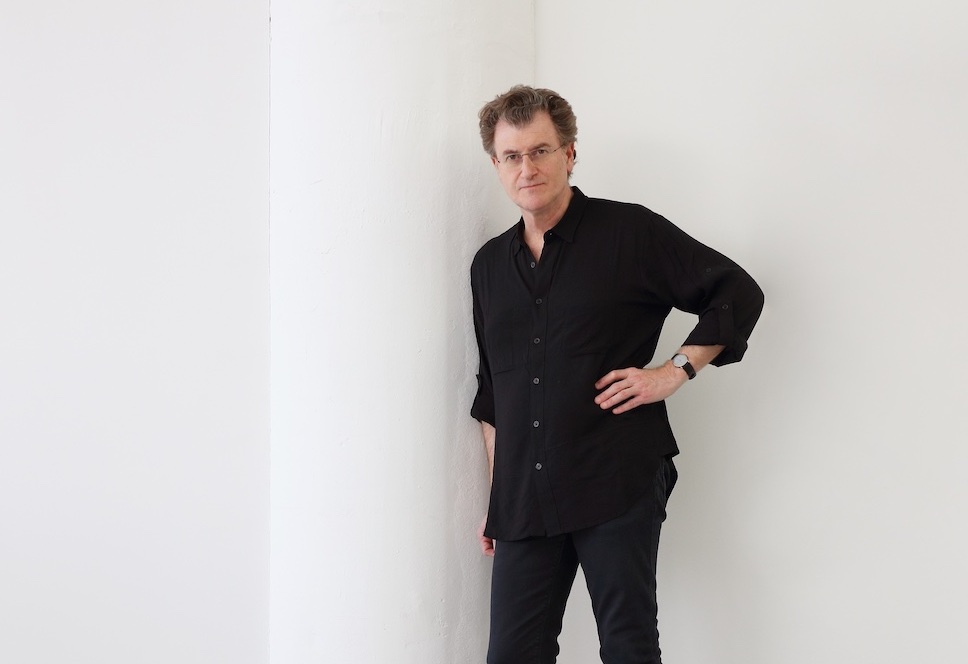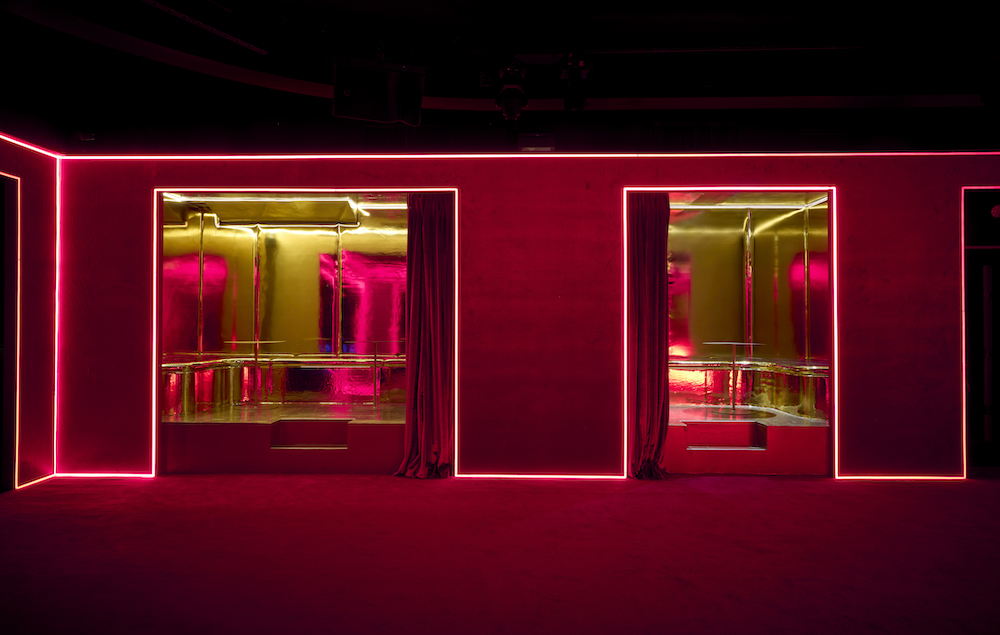The artist spoke with Whitewall for its Spring 2023 issue
You’re first hit by a sea of red. Engulfed in a pulsating, all-consuming hue, you trepidatiously enter a gallery space containing just one work. It reads, “What need is there to weep over parts of life? The whole of it calls for tears.” These words by Seneca, like the red light, permeate and stick. They land in your gut.
This was one half of Alfredo Jaar’s solo exhibition last spring at Galerie Lelong in New York, “The Temptation to Exist.” In the show, the Chilean artist, known for creating immersive installations that address our relationship to and the politics of imagery, confessed to the viewer, “I don’t know what to do in this time.” A sentiment we can all certainly relate to after the past few years.
Jaar, a self-described architect making art, lives according to the methodology of context is everything. He deeply researches a photograph, an image, a major historic moment, and then tries to distill its meaning, importance, and impact, balancing the realities of often difficult topics with a certain poetry that allows for reflection. He creates space for the viewer to contemplate. Rather than hitting you over the head with an idea, he hits your heart, opens your mind.
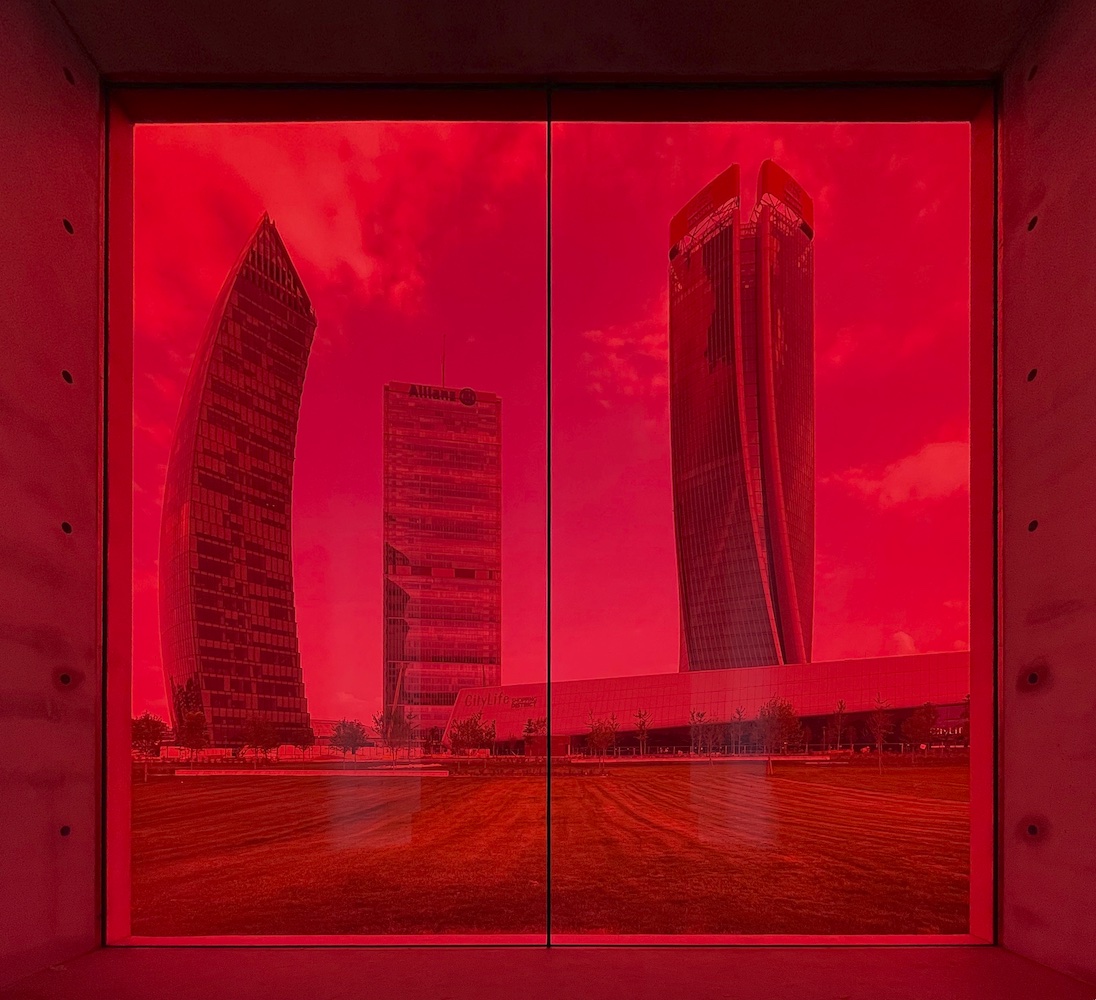
Alfredo Jaar, Padiglione Rosso, 2022, © Alfredo Jaar, courtesy of the artist and Galerie Lelong & Co., New York.
The second half of his show at Galerie Lelong was an intimate room, filled with more than 100 works by over 70 artists. It provided an answer to both the viewer and himself. It was work by names like LaToya Ruby Frazier, Gordon Matta-Clark, Felix Gonzalez-Torres, Nancy Spero, Kara Walker, Cecilia Vicuña, Carrie Mae Weems, and more—artists who are devoted to responding to the uncertainty of now. In this effort, Jaar answered the question of, “What do we do?” Making art is what we can do, did do, and will do.
With upcoming solo shows at Goodman Gallery, Cecilia Brunson Projects, and the Museum of Contemporary Art, Hiroshima this spring and summer, Jaar spoke to Whitewall about how art and culture are the last remaining spaces of freedom.
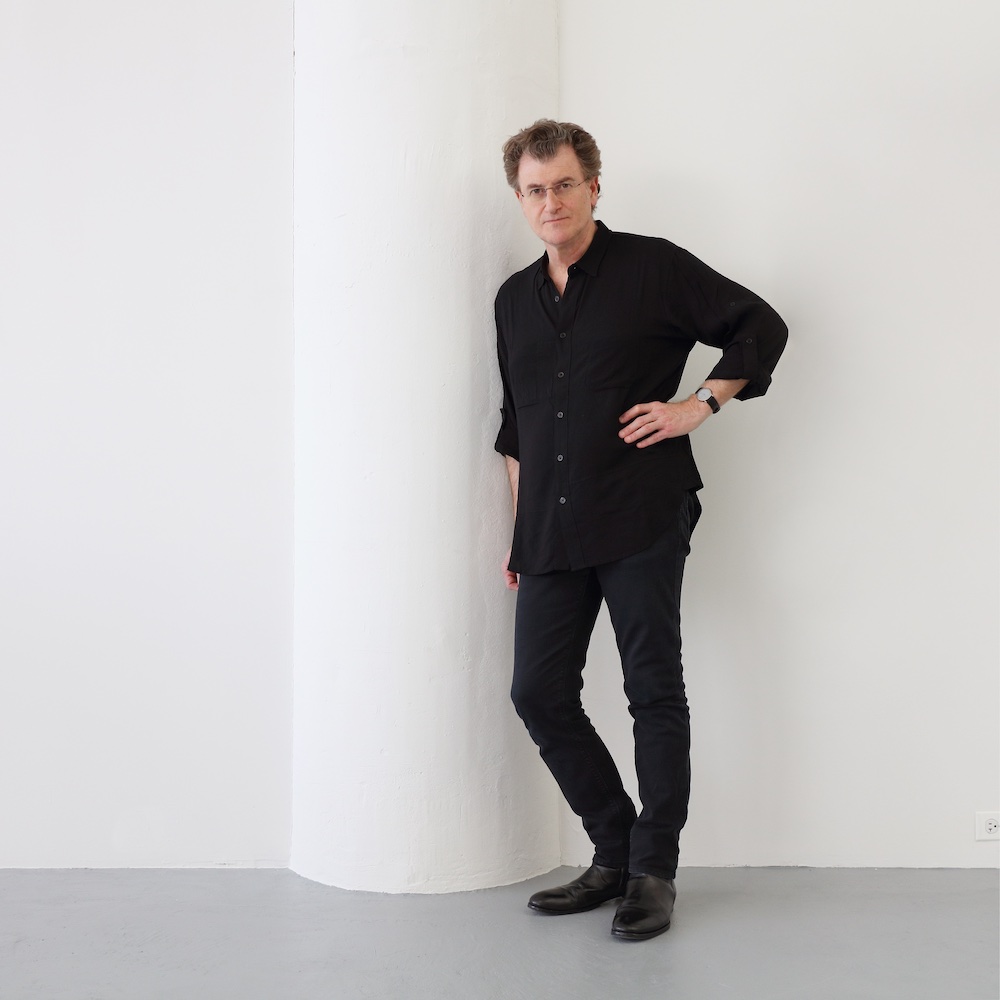
Alfredo Jaar, portrait by Marco Anelli.
WHITEWALL: You wanted to be an artist, but you were convinced to study architecture. You describe that course of study as a gift and still describe yourself as an architect making art. How does architecture frame your artistic approach?
ALFREDO JAAR: For an architect, context is everything. Since I did not study art, the most logical and spontaneous way for me to start making art was responding to the context in which I had to work, which was during the dictatorship of General Pinochet. Those beginnings left their mark on my practice, and I have continued in that manner since then. In fact, I have never been able to create a single work of art that is purely the fruit of my imagination. I just do not know how to do it. Every work is a response to a given moment in time, a given situation, a given context. When I confront a space, I do not merely see walls of certain dimensions and height, I perceive a social space, a cultural space, a political space. This is how architects think; that is our methodology. That is why I define myself as an architect that makes art.
“Every work is a response to a given moment in time.” —Alfredo Jaar
WW: You say that you will not act in the world until you understand the world. So how do you go about understanding the world? What is usually the starting point for you?
AJ: When I say the world, I mean of course the specific world in which I will attempt to act, not the entire world. Understanding the world in my case is understanding the context, and in order to achieve this understanding I do an enormous amount of research. A space, any space, is full of memories that I think are important factors to comprehend before creating for it. Because no matter whether we are conscious or not, anything we create in that particular space will dialogue with that memory. And will affect the reading of our creation. So even if the artist does not directly respond to a given context, the least she can do, I think, is to be aware of its essence.
The same logic goes for the content, the subject of the work. I need to understand it in a depth and scope that gives me confidence. I need to reach of level of critical understanding of my subject, a level of what I call responsible understanding before acting. I have been trained not to allow any ideas to emerge before reaching that level of responsibility.
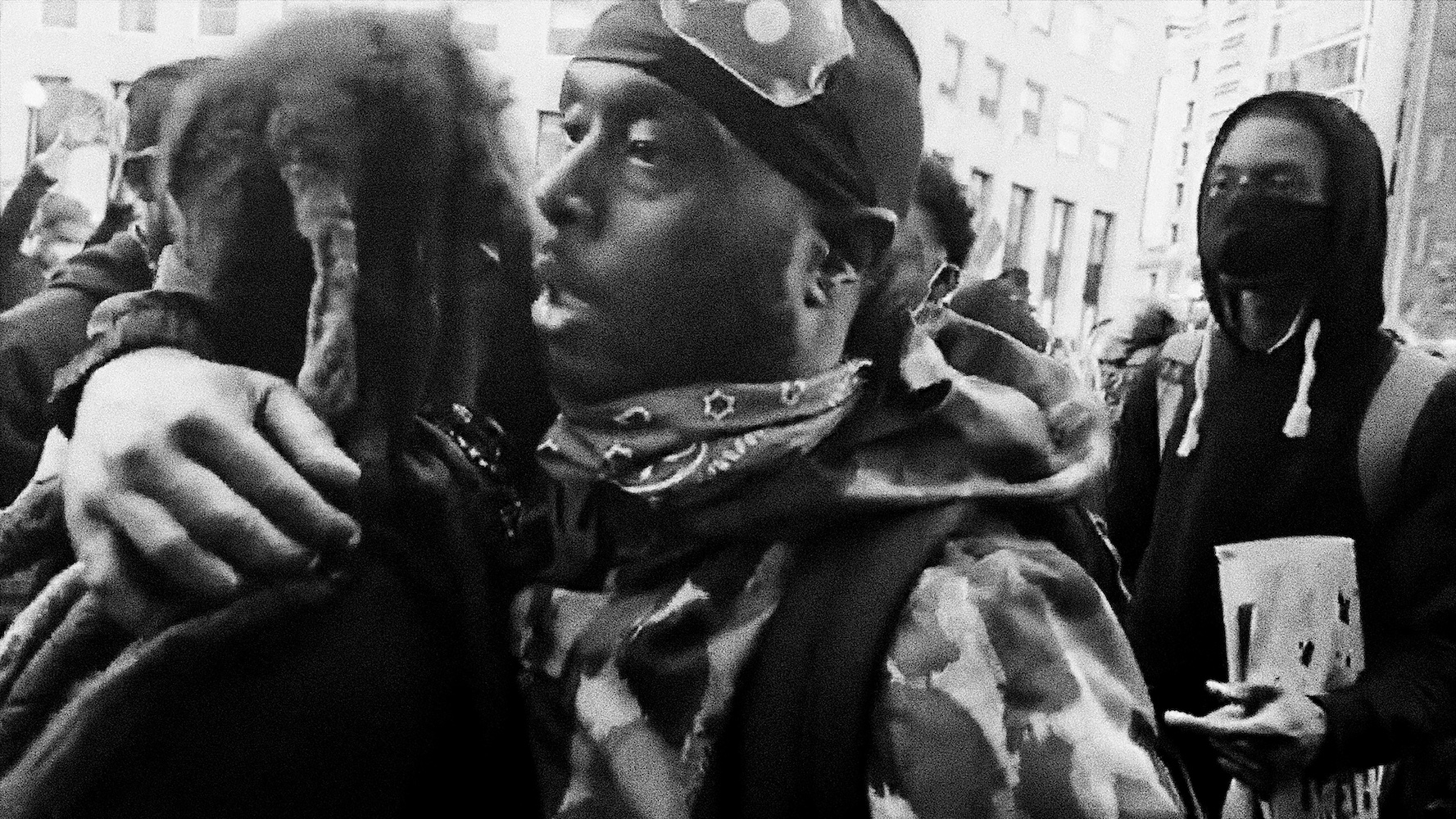
Alfredo Jaar, 06.01.2020 18.39, 2022, © Alfredo Jaar, courtesy of the artist and Galerie Lelong & Co., New York.
WW: How do photographs and images help you fill in that context needed to create art?
AJ: Photographs, images, are our new landscape. And these images are not innocent. They affect us; they communicate to us how to live, how to think. They do this with forcefulness, and authority. They assault us without warning, without mercy. Billions of them are produced and released every minute of our lives. We are constantly drowning in a sea of consumption of images, images which are in reality products, and ideas. That is why I am interested in what I call the politics of images. I have created many works that focus on a single image, in an attempt to understand their meaning and power. And share my findings with the audience.
WW: You describe photography as a futile attempt to represent reality. That as an artist, you are always trying to bridge the gap between the reality we cannot represent, and the new reality that artists create. What are those new representations, new realities, you want to create?
AJ: Correct—I have always felt that reality cannot be represented and that we can only create a new reality. And each one of these new realities that we create are models of thinking about the world. That is why images are important, because they invent a new model, a new way of thinking. Every image we create contains an ideological dimension of our worldview, and when we share it with the audience, we are suggesting a way of thinking, a political way to think about the world. That is what makes them important. Aware of this, I have defined most of my works as exercises in representation where I attempt an approximation to a given reality, which I infuse with poetry.
WW: Your installations use light and space to first prepare and then tell a story to the viewer—works like Shadows (2014), as an example. How can light and architecture help prepare us to listen, to see, to experience a story?
AJ: Light and space are some of the fundamental tools of architecture. We use them to communicate with our audience. There are many others, like scale, circulation, direction, shadows, et cetera. They convey meaning, they convey feelings. These are very powerful elements that, if used properly, have the capacity to communicate ideas clearly and effectively.
WW: Your work addresses very real, very dire situations, and you’ve said you try to find a balance between information and poetry. Why is it important to find the poetic aspects for you, especially when it’s so difficult to do so?
AJ: The poetic component is essential as it transforms the information into art. That balance, that ideal equilibrium between information (ethics) and poetry (aesthetics), is extremely difficult to achieve, and I have failed again and again in my attempts to reach that perfect state that is very close to the sublime. The work’s objective is to inform you but also to move you, to touch you, supremely, to illuminate you. Poetry appears also in another way into the structure of the work, as each project is treated as a haiku where I attempt to express the maximum with the minimum possible. The extreme economy of means of the haiku is a model for each and every project, as I try hard to edit out as much as I can. I have always believed in the power of a single idea.
“I have always believed in the power of a single idea.” —Alfredo Jaar
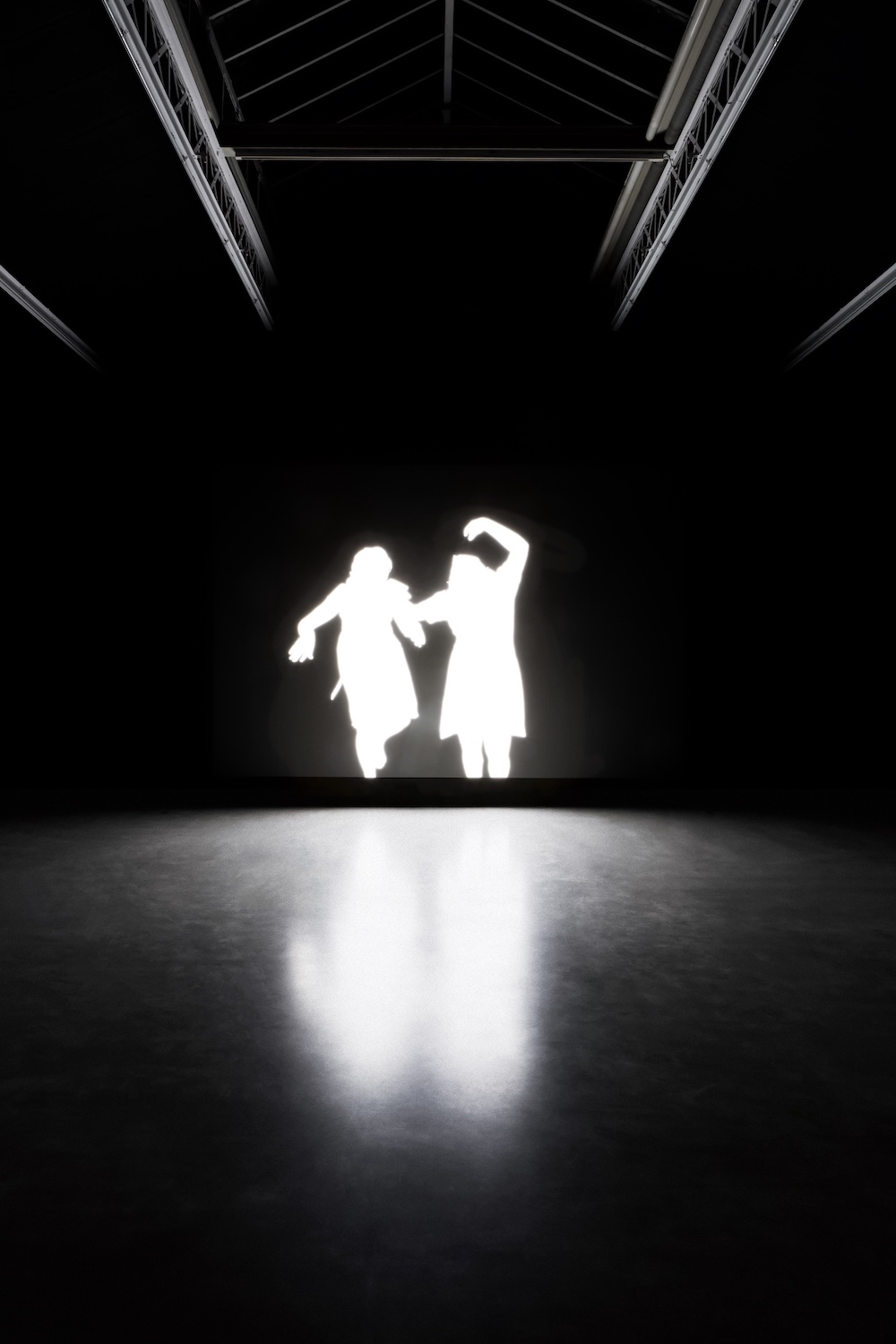
Alfredo Jaar, “06.01.2020 18.39,” 2022, © Alfredo Jaar, courtesy of the artist and Galerie Lelong & Co., New York. Alfredo Jaar, Shadows, 2014, © Alfredo Jaar, courtesy of the artist and Galerie Lelong & Co., New York.
WW: The color red is present in some of your recent work, engulfing the viewer, including your show at Galerie Lelong in New York, “The Temptation to Exist” (May 13–June 25, 2022). Why did you choose the color red to execute in neon the quote from Seneca, “What need is there to weep over parts of life? The whole of it calls for tears.”
AJ: Red is a powerful color full of meaning and potential. It is not only the color of life and love, but it is also the color of suffering, warning, and danger. I was interested in that dichotomy to visually reinforce and expand Seneca’s quote in the large gallery space. With this red space effect, I wanted to share with the audience my feelings of uncertainty in these dark times. We live in an era of extreme political instability around the world and winds of fascism are blowing from all sides. As if this was not enough, our planet is in real danger and the next generation will suffer greatly to survive due to our criminal incapacity to protect the environment. Then the Ukraine invasion started . . . and the obsessive media focus on it rendered practically invisible a dozen of terrible conflicts around the world, from Yemen to South Sudan, from Palestine to Burma, and so many others.
WW: This room creates an immediate sense of unease in the viewer, even before they take the time to read and sit with Seneca’s words. What feeling did you want to evoke in the second room of the gallery, where you installed over 100 works by 72 artists?
AJ: That other smaller space was a counterpoint to the larger one. It was a way to suggest that art and culture are the answer, that only imagination will save us. I wanted to create a space overflowing with critical thinking and joy. I truly believe that culture is our real capital, and that the spaces of art and culture are the last remaining spaces of freedom. I selected the works of artists from around the world that I deeply admire and that have illuminated my practice. The act of installing these works in the gallery had a magic effect on me— suddenly I felt energized and hopeful. It made me remember Louise Bourgeois’s words: “Art is a guarantee of sanity . . .”
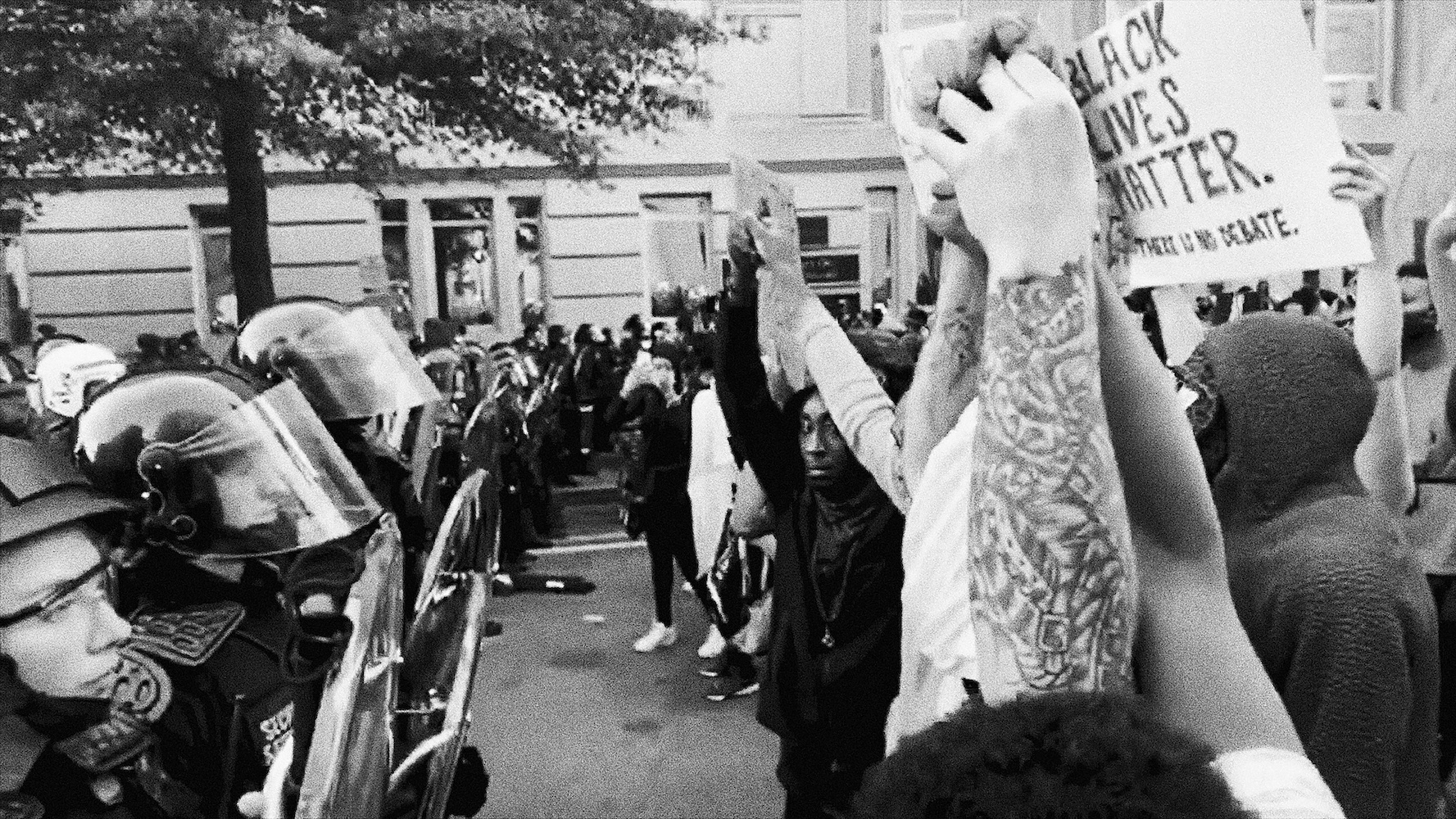
Alfredo Jaar, “06.01.2020 18.39,” 2022, © Alfredo Jaar, courtesy of the artist and Galerie Lelong & Co., New York.
WW: You described the show as a confession to the audience that you don’t know what to do at this moment, post-COVID, in the face of war, global warming, et cetera. Why was this important for you to confess to your viewer?
AJ: As an artist, I have never been afraid to say I don’t know. And that was the situation I was facing when the gallery invited me to organize my next solo show. In fact, that is exactly what I told Mary Sabbatino, the gallery’s director: I don’t know. But this is the first time I have tried to create a mise-en-scène for that moment of uncertainty and loss.
We have no choice but continue to try to make sense of the world in which we live. One of my neon works says: “I can’t go on, I’ll go on.”
WW: You’ve described yourself as an optimist. Would you say the show was an exercise in helping you yourself find hope? To maintain that optimism?
AJ: Honestly, I did not think about that until I realized it while installing the show. Only then I realized I had invented a way for myself to be an optimist, by revisiting these extraordinary works of art. Generally speaking, I consider myself a Gramscian: pessimism of the intellect, but optimism of the will.
WW: You’ve said that you want to change the world, and so in that sense you fail all the time because you’ve failed to change it. I’m not sure I can agree with you there, as your work has certainly changed my worldview! But what keeps you resolved to keep trying to change the world in the face of failure?
AJ: I am very happy to hear these words—thank you. I think that failing is underrated. Every occasion we fail is an opportunity to try again and fail better. In fact, what are considered my most successful works are the result of repeated failures.
WW: Something you tell the students you work with is to stop making stuff for the sake of making stuff. That art is 99 percent thinking and one percent making. How do you know when the idea you have is worth making or ready to make?
AJ: The model of working I have always suggested to my students is based on a long process of thinking, about the context, about the issues that matter to that context, and the issues they are interested in. That thinking phase is essential and can last weeks, months, in my case years. Only when they reach a responsible level of understanding of the issues they are focusing on, they let ideas flow freely, not before. These ideas are then analyzed and dismissed not only once, but twice, three times, until there are no ideas left. And then they start again their search for ideas that they will again dismiss. It is in that moment of despair when suddenly an idea will emerge that cannot be dismissed, that will resist every analysis, every counterargument. And a work of art is born.
WW: What are you thinking about lately from which you hope to make something?
AJ: I have been working on an exhibition at the Hiroshima Museum of Contemporary Art in July of this year where I have been commissioned four new works regarding the tragedies of Hiroshima and Nagasaki, when, for the first time in history, atomic bombs were detonated over those two cities, killing more than 300,000 people, most of them civilians, and leaving countless wounded survivors. Before that despicable act, the United States had bombed and devastated 64 Japanese cities. When I read these days in the U.S. media so many casual comments on the possible use of nuclear bombs in the Russia–Ukraine conflict, with some columnists even promoting it, I am horrified, to say the least. When I go to bed some nights after working on these projects, I close my eyes in search of darkness, but I see that noiseless flash of light in the sky of Hiroshima and I can’t sleep.
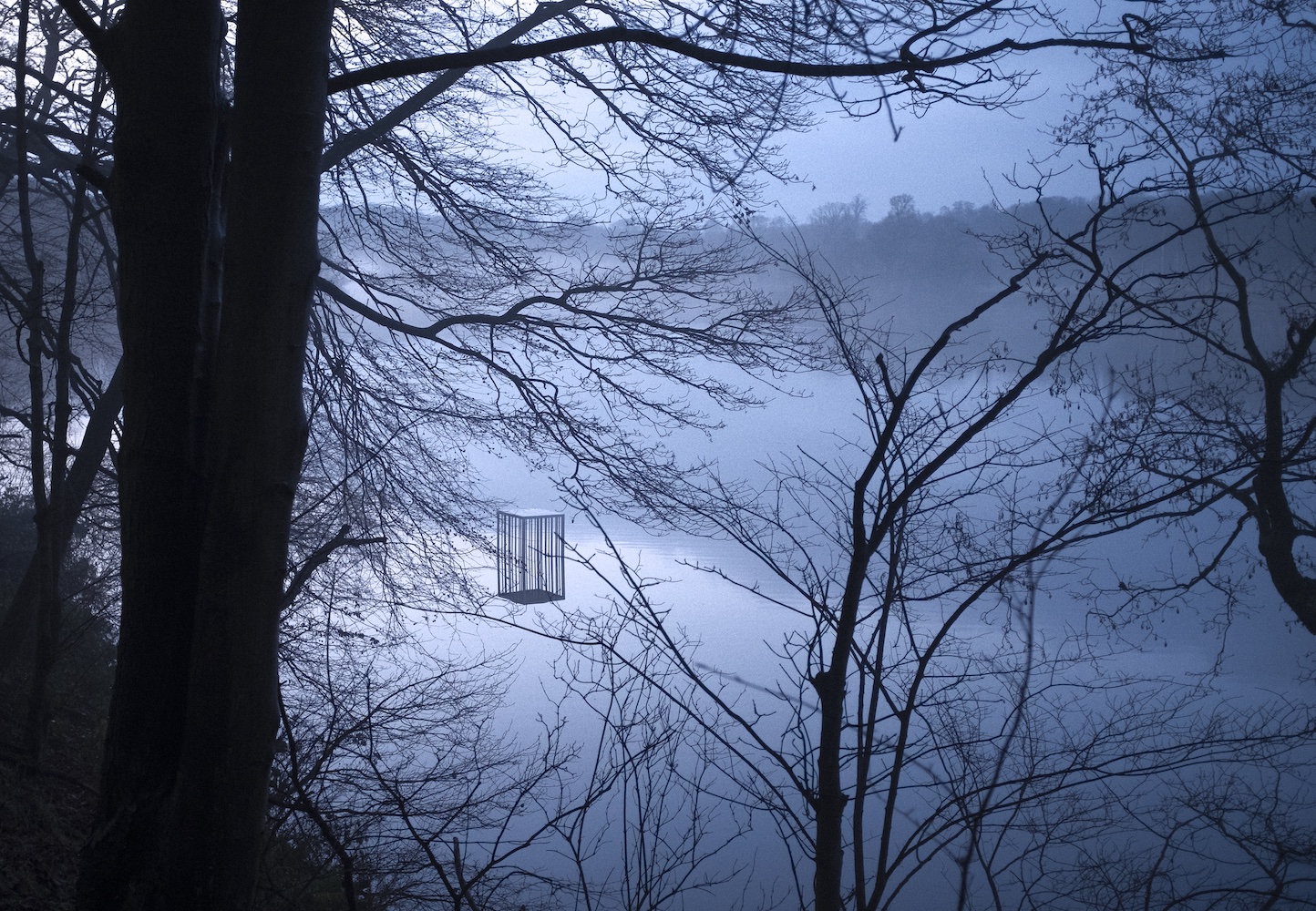
Alfredo Jaar, “The Garden of Good and Evil,” 2019, © Alfredo Jaar, courtesy of the artist and Galerie Lelong & Co., New York.



